Refine Your Skills at Working with UN-REFINED Flours!
My calculated guess is that you Cook’n readers find it pretty easy to make beautiful bread with white flour. I wonder, though, how it goes for you with whole wheat flour? You’ve probably found that using whole wheat takes things up a notch.
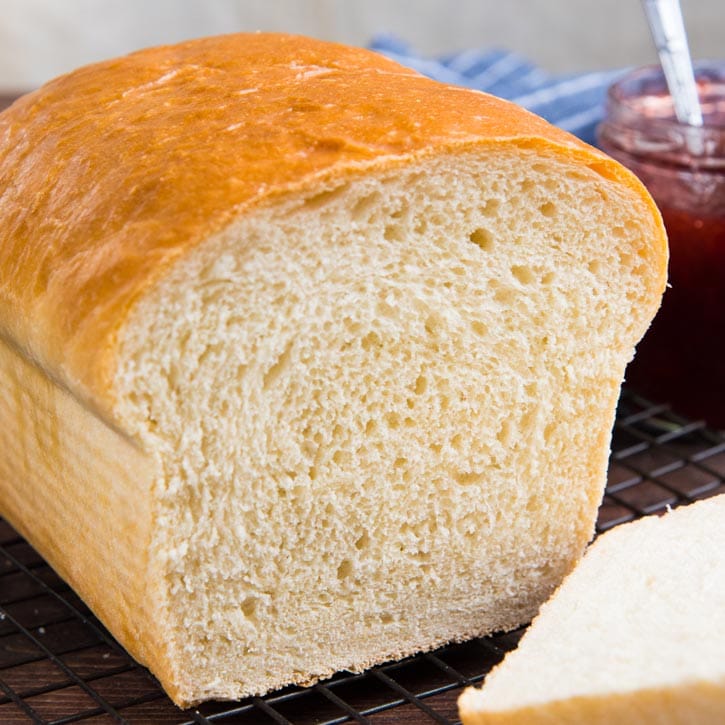
Unlike white flour, whole wheat–like other unrefined grains–contains germ and bran. They’re loaded with zinc, magnesium, iron, omega-3 fatty acids, and dietary fiber. The germ and bran also add a fuller texture and a nutty flavor to a loaf of bread. But they also make life harder for bakers.
For one thing, bran and germ soak up water, which will dry out a loaf, making it crumbly. This is the main reason you can’t simply substitute whole grain for white flour. So when you’re in the mood to make whole wheat (or other whole grain) bread, you’ll want to find a recipe specifically created for that flour.
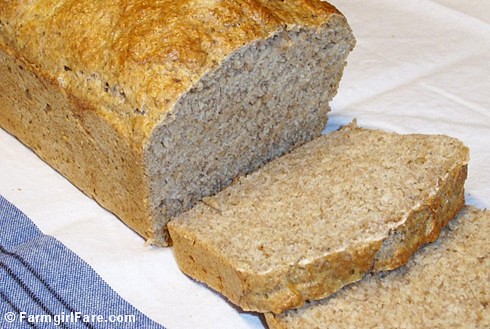
Besides dryness, the germ and bran also increase the dough’s weight, hindering its capacity to rise. This results in loaves dense enough to make great doorstops. But when properly made, whole wheat bread is light, soft, and as fluffy as white bread (but MUCH more healthy!).
My point: If at first your whole wheat bread effort doesn’t succeed, it’s worth it to try, try again. Thank goodness there’s no rocket science required, just a few basic time-honored techniques. So if this is something you’d like to pursue this fall and winter, here’s what the pros know:
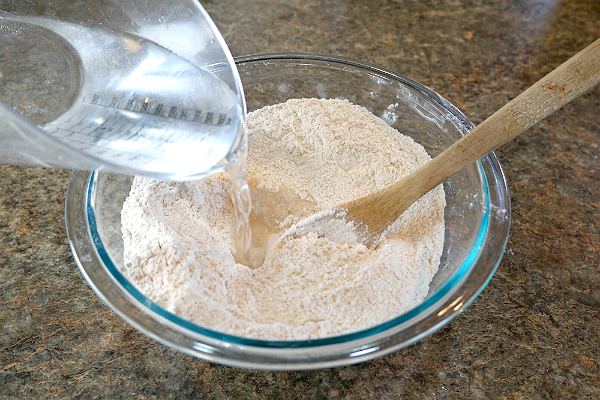
First and foremost, you must use enough water. Professional bakers always use at least 14.4 ounces of water to a pound of whole wheat flour. Some even use 17 ounce of water to a pound of flour. My personal experience is that on a rainy, muggy day, I need less than 17 ounces and on a dry day I’ll definitely need more than the 14.4 ounces.
Second, don’t over-knead whole wheat dough. Its bran can actually cut the dough like knives that slice through the gluten strands when you’re kneading it. This cutting action will damage the consistency and structure of the dough and curtail its ability to rise. A quick mix is just fine.
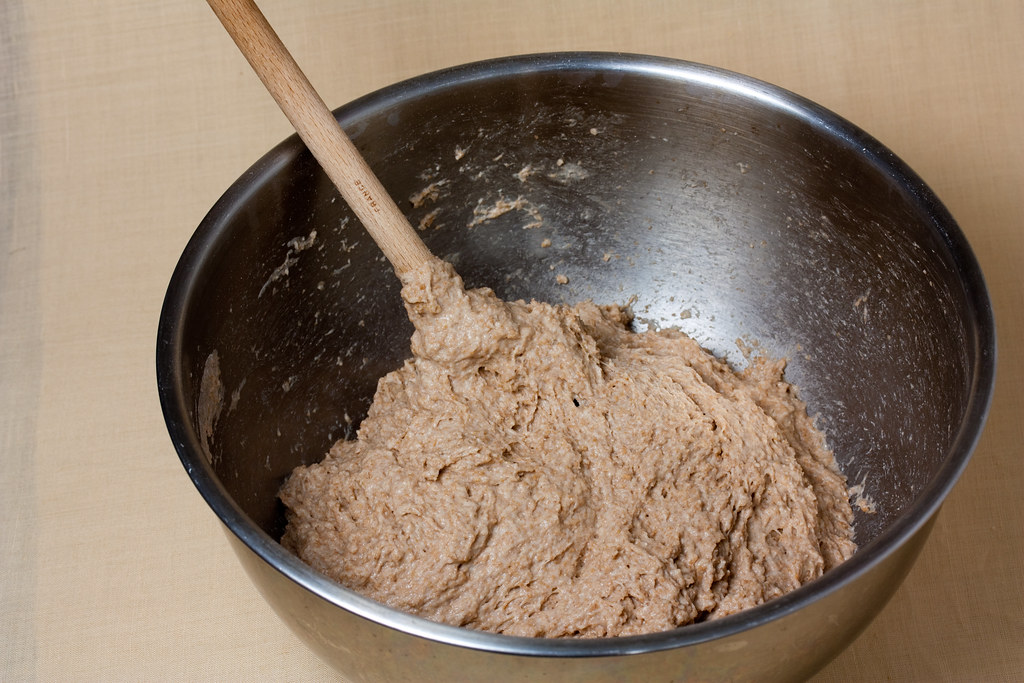
Third, give whole wheat dough more time to rise than you would white dough (due to the heavy germ and bran particulates). But that said, there is only so much time you can give. At a certain point, a ball of dough will reach its maximum volume. Then, as the fermenting yeast continues metabolizing the sugars in the wheat, the dough stops rising and reverses. If you let your dough over-ferment, then the gluten deteriorates, and the dough will collapse.
So, what’s the sweet spot? The rule of thumb says you can let whole wheat dough rise for about three-and-a-half hours at 75°F before it reaches its maximum volume.
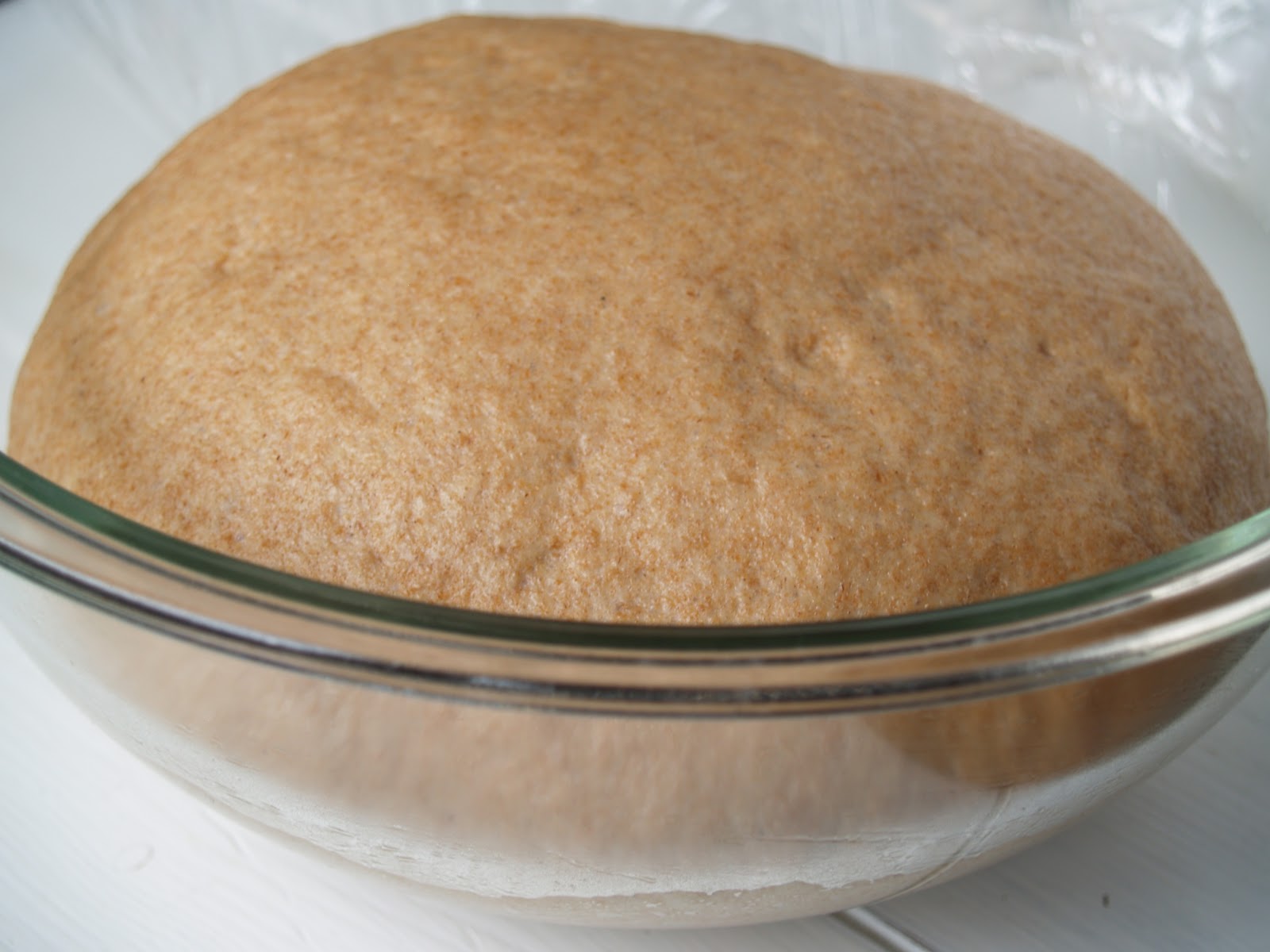
But here’s a professional bread-making secret: If you use less yeast, it will take longer to attain its full vigor and thus the dough will take longer to reach its maximum gas capacity. This technique allows greater development of flavor as the yeasts work on the germ, bran and endosperm. Some bakers use only 1/10th the amount of recommended yeast, with their dough taking up to 36 hours to rise properly.
The pros liken these day-and-a-half breads to the great red wines of Bordeaux. Like a good Cabernet Sauvignon, they explain, such complex, long-fermented whole grain bread lasts longer on the shelf and its flavor is off the charts.
It’s true, whole wheat baking takes some effort and time to do well. But here’s the deal: White flour is nothing but powdery white endosperm–almost entirely void of nutrition. It’s just starch. Ninety percent of the nutrients in whole wheat go out the door as soon as you mill it into white flour. And, get this: The latest research is showing that gluten intolerance is actually an intolerance to refined flour.
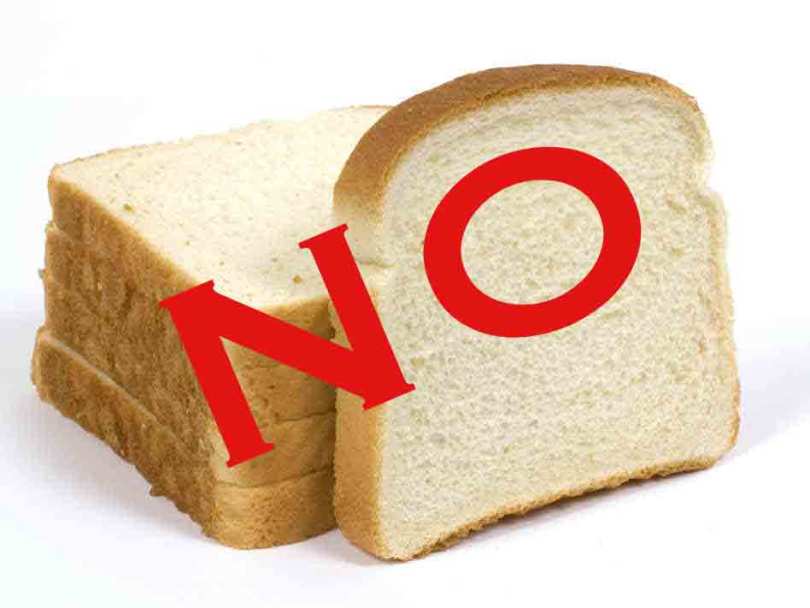
But, as mentioned above, whole grain proselytizers believe it’s well worth all the time and effort it takes to refine your skills at working with un-refined flours!
I’ll end with a favorite whole wheat bread recipe from www.allrecipes.com that’s gotten 4.8 out of 5 stars from almost 2,000 reviews!
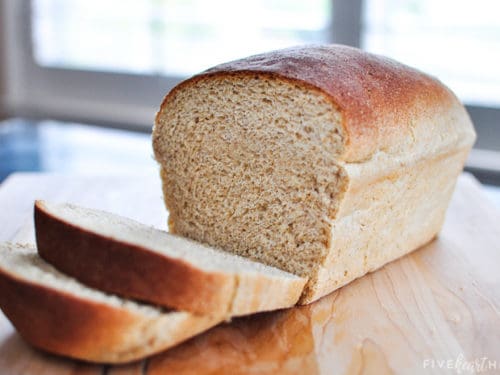

3 cups warm water (110°F)
2 (1/4-ounce) packages , active dry yeast
1/3 cup honey
5 cups whole wheat flour
*******
3 tablespoons butter melted
1/3 cup honey
1 tablespoon salt
3 1/2 cups whole wheat flour
2 tablespoons butter melted (for brushing tops of loaves)
Directions:
Add Recipe to Cook'n

Unlike white flour, whole wheat–like other unrefined grains–contains germ and bran. They’re loaded with zinc, magnesium, iron, omega-3 fatty acids, and dietary fiber. The germ and bran also add a fuller texture and a nutty flavor to a loaf of bread. But they also make life harder for bakers.
For one thing, bran and germ soak up water, which will dry out a loaf, making it crumbly. This is the main reason you can’t simply substitute whole grain for white flour. So when you’re in the mood to make whole wheat (or other whole grain) bread, you’ll want to find a recipe specifically created for that flour.

Besides dryness, the germ and bran also increase the dough’s weight, hindering its capacity to rise. This results in loaves dense enough to make great doorstops. But when properly made, whole wheat bread is light, soft, and as fluffy as white bread (but MUCH more healthy!).
My point: If at first your whole wheat bread effort doesn’t succeed, it’s worth it to try, try again. Thank goodness there’s no rocket science required, just a few basic time-honored techniques. So if this is something you’d like to pursue this fall and winter, here’s what the pros know:

First and foremost, you must use enough water. Professional bakers always use at least 14.4 ounces of water to a pound of whole wheat flour. Some even use 17 ounce of water to a pound of flour. My personal experience is that on a rainy, muggy day, I need less than 17 ounces and on a dry day I’ll definitely need more than the 14.4 ounces.
Second, don’t over-knead whole wheat dough. Its bran can actually cut the dough like knives that slice through the gluten strands when you’re kneading it. This cutting action will damage the consistency and structure of the dough and curtail its ability to rise. A quick mix is just fine.

Third, give whole wheat dough more time to rise than you would white dough (due to the heavy germ and bran particulates). But that said, there is only so much time you can give. At a certain point, a ball of dough will reach its maximum volume. Then, as the fermenting yeast continues metabolizing the sugars in the wheat, the dough stops rising and reverses. If you let your dough over-ferment, then the gluten deteriorates, and the dough will collapse.
So, what’s the sweet spot? The rule of thumb says you can let whole wheat dough rise for about three-and-a-half hours at 75°F before it reaches its maximum volume.

But here’s a professional bread-making secret: If you use less yeast, it will take longer to attain its full vigor and thus the dough will take longer to reach its maximum gas capacity. This technique allows greater development of flavor as the yeasts work on the germ, bran and endosperm. Some bakers use only 1/10th the amount of recommended yeast, with their dough taking up to 36 hours to rise properly.
The pros liken these day-and-a-half breads to the great red wines of Bordeaux. Like a good Cabernet Sauvignon, they explain, such complex, long-fermented whole grain bread lasts longer on the shelf and its flavor is off the charts.
It’s true, whole wheat baking takes some effort and time to do well. But here’s the deal: White flour is nothing but powdery white endosperm–almost entirely void of nutrition. It’s just starch. Ninety percent of the nutrients in whole wheat go out the door as soon as you mill it into white flour. And, get this: The latest research is showing that gluten intolerance is actually an intolerance to refined flour.

But, as mentioned above, whole grain proselytizers believe it’s well worth all the time and effort it takes to refine your skills at working with un-refined flours!
I’ll end with a favorite whole wheat bread recipe from www.allrecipes.com that’s gotten 4.8 out of 5 stars from almost 2,000 reviews!

Best Basic Whole Wheat Bread
Yield: 3 loaves
Serving size: 1
Calories per serving: 5,060
Ingredients:
Serving size: 1
Calories per serving: 5,060
3 cups warm water (110°F)
2 (1/4-ounce) packages , active dry yeast
1/3 cup honey
5 cups whole wheat flour
*******
3 tablespoons butter melted
1/3 cup honey
1 tablespoon salt
3 1/2 cups whole wheat flour
2 tablespoons butter melted (for brushing tops of loaves)
Directions:
1. In a large bowl, mix first 3 ingredients: warm water, yeast, and 1/3 cup honey. Add 5 cups white bread flour, and stir to combine. Let set for 30 minutes, or until big and bubbly.
2. Mix in 3 tablespoons melted butter, 1/3 cup honey, and salt. Stir in 2 cups whole wheat flour. Flour a flat surface and knead with whole wheat flour until not real sticky - just pulling away from the counter, but still sticky to touch. This may take an additional 2 to 4 cups of whole wheat flour. Place in a greased bowl, turning once to coat the surface of the dough. Cover with a dishtowel. Let rise in a warm place until doubled.
3. Punch down, and divide into 3 loaves. Place in greased 9 x 5 inch loaf pans, and allow to rise until dough has topped the pans by one inch.
4. Bake at 350°F for 25 to 30 minutes; do not over-bake. Lightly brush the tops of loaves with 2 tablespoons melted butter when done to prevent crust from getting hard. Cool completely.
2. Mix in 3 tablespoons melted butter, 1/3 cup honey, and salt. Stir in 2 cups whole wheat flour. Flour a flat surface and knead with whole wheat flour until not real sticky - just pulling away from the counter, but still sticky to touch. This may take an additional 2 to 4 cups of whole wheat flour. Place in a greased bowl, turning once to coat the surface of the dough. Cover with a dishtowel. Let rise in a warm place until doubled.
3. Punch down, and divide into 3 loaves. Place in greased 9 x 5 inch loaf pans, and allow to rise until dough has topped the pans by one inch.
4. Bake at 350°F for 25 to 30 minutes; do not over-bake. Lightly brush the tops of loaves with 2 tablespoons melted butter when done to prevent crust from getting hard. Cool completely.
Recipe formatted with the Cook'n Recipe Software from DVO Enterprises.
Sources:
- www.theflavorbender.com
- www.farmgirlfare.com
- www.flickr.com
- www.persimmonandpeach.blogspot.com
- www.whatsuplife.in
- www.fivehearthome.com
 Alice Osborne
Alice Osborne
Weekly Newsletter Contributor since 2006
Email the author! alice@dvo.com
